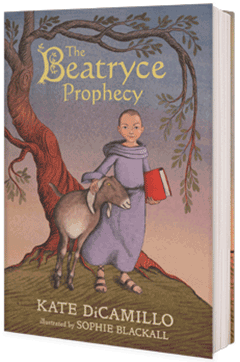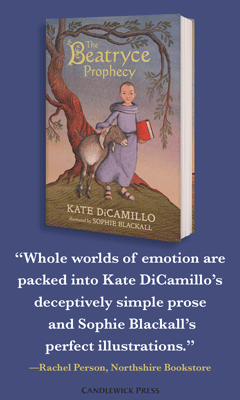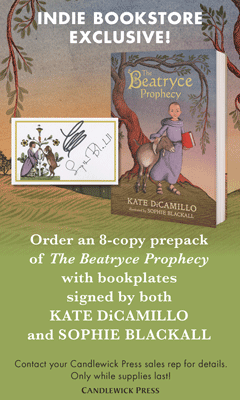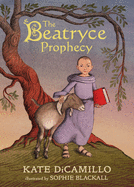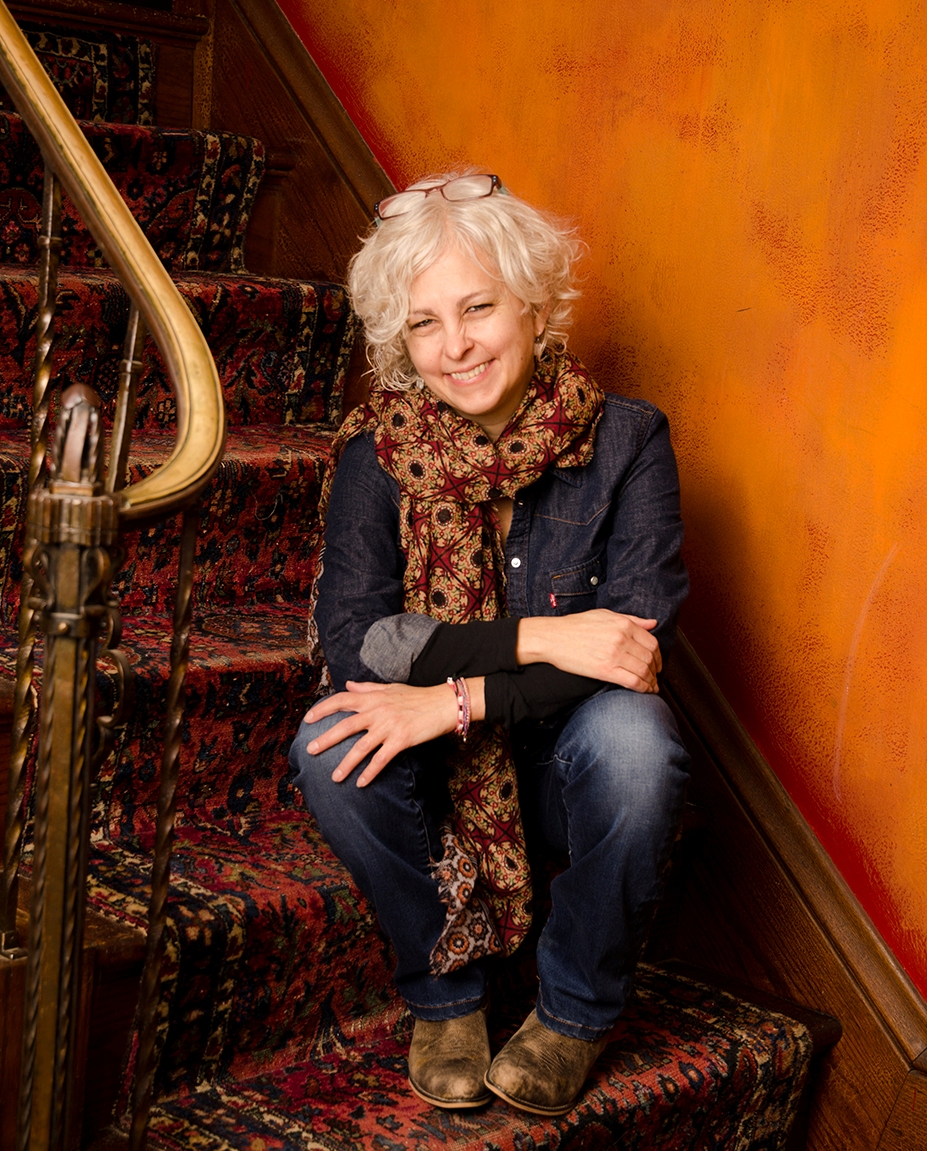The Beatryce Prophecy
by Kate DiCamillo, illus. by Sophie Blackall
In The Beatryce Prophecy, the talents of two-time Newbery medalist Kate DiCamillo and two-time Caldecott medalist Sophie Blackall combine to create an unforgettable medieval epic that illustrates the magical and myriad ways that love and stories change the world. Delightfully unexpected allies find profound connection through a common belief in the importance of compassion, even in the face of evil.
The narrative hinges on a prophecy: "There will one day come a girl child who will unseat a king and bring about a great change." Some people desire to bend the prophesy to their own will while others simply wish to be part of the story.
The mysterious appearance of a girl "not more than ten years old" in the barn of the monks of the Order of the Chronicles of Sorrowing is the spark that ignites The Beatryce Prophecy. The monks are the keepers and authors of the Chronicles, which "tell the story of what has happened and of things that might yet happen, those things which have been prophesied." Brother Edik is both a prophesier and an illuminator of the "glorious golden letters that begin the text of each page of the Chronicles." One morning, late to feed the hard-headed and wily monastery goat, Brother Edik discovers that the beast is curled protectively around a small, dirty, feverish child with bloodied feet. The girl eventually wakes from her illness with the memory of her name--Beatryce--but nothing else. While Brother Edik is inexplicably moved by the child, wishing only to nurse her back to health, his superiors are not so beguiled, especially when they learn the shocking and illegal fact that she, a girl, can read and write. "In the whole of the world--from the great sea that Brother Edik had never laid eyes on but knew existed, to the dark mountains that Brother Edik had heard described--there was only a handful of people who could read." Those allowed to read are monks, scholars, counselors to the king and the king himself, males all. The monks of the Order of the Chronicles of Sorrowing want this strange child gone as soon as possible.
An orphan boy named Jack Dory shows up at the monastery on an errand to find a monk who can write a record of a soldier's wartime crimes so that the man may "have some forgiveness" before he dies. The brothers send Beatryce--head shaved, dressed in robes--masquerading as a monk. Their fervent hope is that she will never return. The two children, each bereft of family, embark (along with the fiercely protective goat, Answelica) on an adventure none--except, perhaps, gentle, heartbroken Brother Edik--could have foretold.
It's the people (goats included in that description) that elevate The Beatryce Prophecy to a lofty literary order. Each character's story darts inexorably toward the others, pulled by threads of trust, power, love and loss. Told from the alternating points of view of Beatryce, Jack Dory and Brother Edik, the tale also features an oily tutor-turned-king's counselor, a false king, a hermit in the woods and a noblewoman in a dungeon. Interjections in bold print provide a "meanwhile, back in the castle" perspective, offering glimpses into the maneuverings of the insecure king and his villainous counselor. Hearing his counselor recite the prophecy as a warning to the monarchy, the king asks, "But it is a prophecy. Does that not mean it is destined to come true? Should we interfere with fate?" The counselor answers, "Do not doubt. Small men doubt. Kings do not doubt. And you are a king."
Blackall (Hello Lighthouse; Finding Winnie) uses real and digital pencils to make wondrous black-and-white illustrations that will wedge a space for themselves in readers' memories, like Charlotte holding baby Wilbur or James looking at the giant peach. Spot art depicts a satchel filled with candle, flint and maple candies in the shape of flowers and stars and birds; another shows a curious Jack Dory, his body curved against a tree root, gazing at the design embedded in the hilt of his sword; another has serious, bald-headed, monk-robed Beatryce looking straight at the reader. Trees feature heavily in Blackall's illustrations, hundreds of lines showing the patterns of bark and twist of the trunk, and spreads are sometimes framed with leaves. Medieval garb is simply drawn, evoking rough fabrics and plain lines. Most evocative are the faces: innocent but troubled Beatryce; baffled, injured Brother Edik; and intelligent Answelica, mischief in her eyes.
With her trademark lyrical language and flair for storytelling, DiCamillo (Flora & Ulysses; Because of Winn-Dixie) writes like a patient knitter untangling a ball of yarn as she knits. Themes of love, grief, justice and identity loop together, interlocking as each character finds their way. Throughout Beatryce's own journey, two mysterious, barely remembered lines keep emerging from the depths of her past: "We shall all, in the end, be led to where we belong. We shall all, in the end, find our way home." Brother Edik, struggling mightily his entire life with the words of his cruel father in his head, mocking his wandering eye and tender ways, is finally able to ask of himself this rhetorical question: "And shouldn't home be the place where you are allowed to be yourself, loved as yourself?" Yes, Brother Edik. Indeed, it should. --Emilie Coulter



